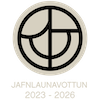Almenn verkefni 2019
Almenn verkefni 2019
Heiti verkefnis : | Meðhöndlun óvissrar framtíðar í sveigjanlegri og aðlögunarhæfri skipulagsgerð fyrir hafnir | |
Verkefnastjóri : | ||
Stutt lýsing á verkefninu: | ||
Fjárfesting í hafnarmannvirkjum getur verið áhættusöm vegna fjölbreyttra óvissuþátta og síbreytilegs samkeppnisumhverfis. Hafnarmannvirki geta haft 100 ára líftíma. Til þess að mannvirkin nýtist sem best á líftímanum þarf að horfa til framtíðar. Aðlögunarhæf skipulagsgerð fyrir hafnir tekst á við óvissuna til þess að stuðla að bættri hagkvæmni og nýtingu mannvirkjanna með því að þróa lausnir sem veita sveigjanleika. Þetta rannsóknarverkefni beitir aðferðum aðlögunarhæfrar skipulagsgerðar fyrir Ísafjarðarhöfn sem er þriðja mest heimsótta höfnin af skemmtiferðaskipum. Til að styðja ákvörðunartöku í ljósi óvissu og óþekktrar framtíðar, þá setur þetta rannsóknarverkefni fram ferli sem 1) skilgreinir tímaramma skipulagsgerðarinnar, 2) bendir á óvissur í kerfinu og tengir framtíðina við stærð óvissuþátta, og 3) framkvæmir langtímaspá á flæði í gegnum höfnina og þar með nauðsynlegri afkastagetu. Til að takast á við óvissuþætti verður leitast við að stilla upp sveigjanlegum valkostum og aðgerðum. Markmiðið er að þetta ferli geti hjálpað til við þróun hafnarinnar sem nýtist til að stuðla að hagkvæmni, virkni og sjálfbærni til langrar framtíðar. | ||
Tilgangur og markmið: | ||
This project answers two main research questions: 1- How should the future be linked with the level of uncertainties surrounding Icelandic port development? 2- How should uncertainties be addressed in the planning process to present a robust port development plan? The present research is a part of an ongoing Adaptive Port Planning (APP) project for the multipurpose Port of Isafjordur (Hafnir Ísafjarðarbæjar), the first such project in Iceland. This research deals with uncertainties confronting the port and conducts a long-term port throughput and required capacity forecasts. The objectives of this research are: a) to provide insights into the future and link the future to the level uncertainties; b) to facilitate the port planning process and support decision makers for a successful port development that is in line with the vision and goals of stakeholders; thus, they should be able to decide whether to invest immediately in facilities to accommodate (future) demand or not. Also, stakeholders can make the decision that the port infrastructure should be a durable structure with a technical lifetime, at least equal to the expected economic lifetime, or a cheaper structure with a shorter technical lifetime; c) to generate knowledge for the municipalities and related authorities by which the practitioners and experts will be more able to develop a robust and flexible port master plan for any future that materializes. The results serve as a direct input into enhancing sustainability, long term functionality and supplying demand for a longer lifetime horizon of Icelandic ports. The final objectives are: d) to develop a research cluster between academia, related industries and authorities in the region and country in the field of port development; e) to develop a number of scientific and peer-reviewed international publications, give lectures at conferences and meetings to improve the national and international knowledge of technical and scientific communities. | ||

